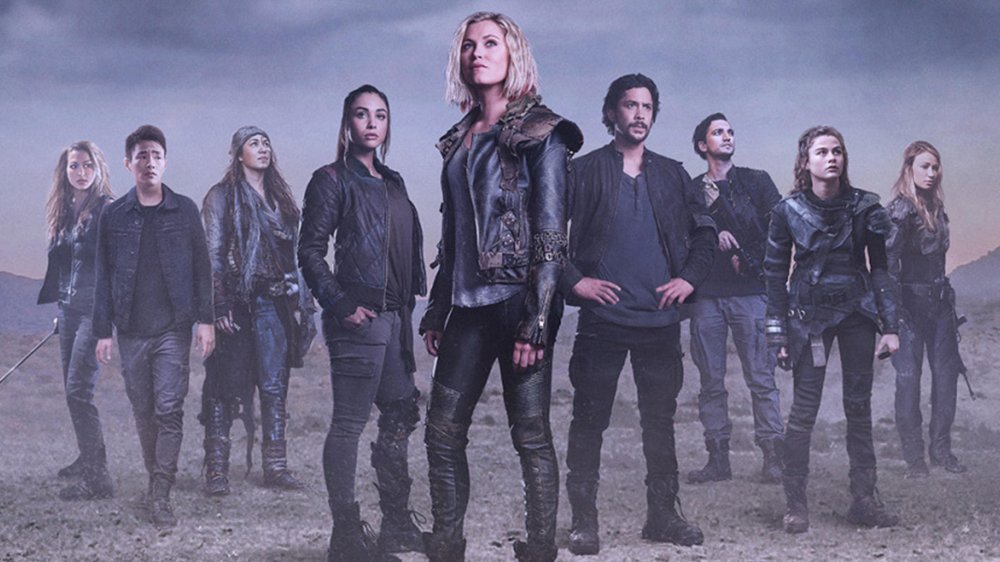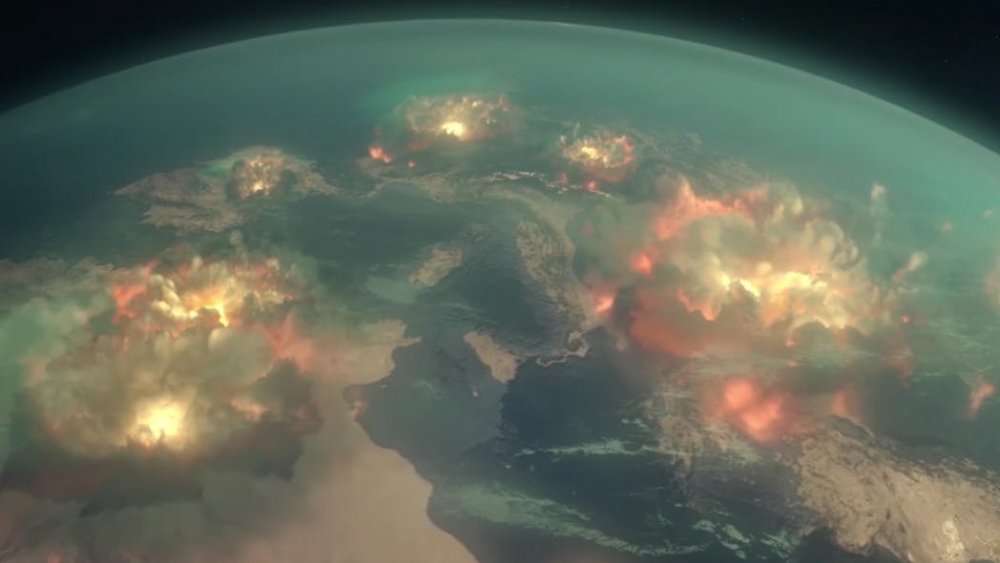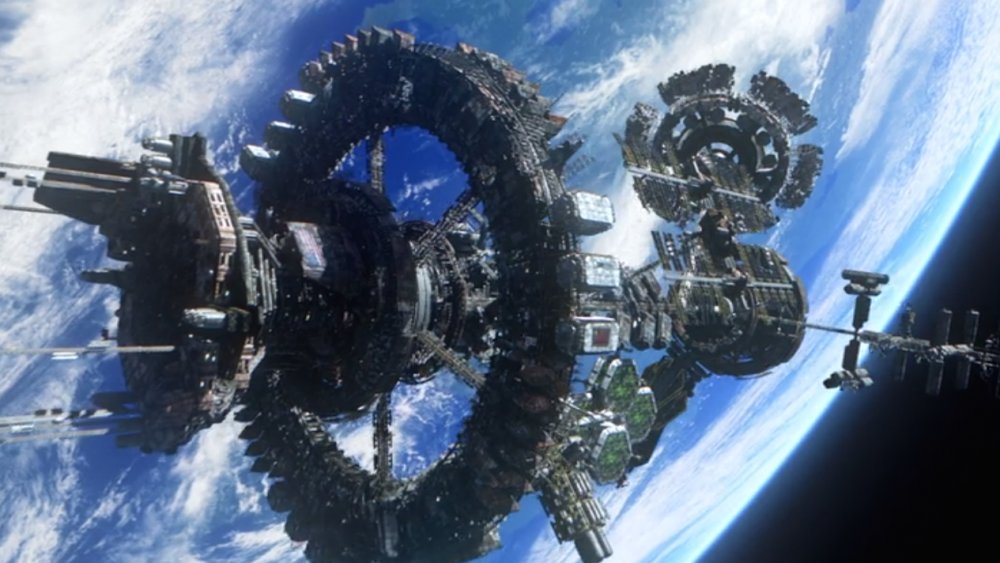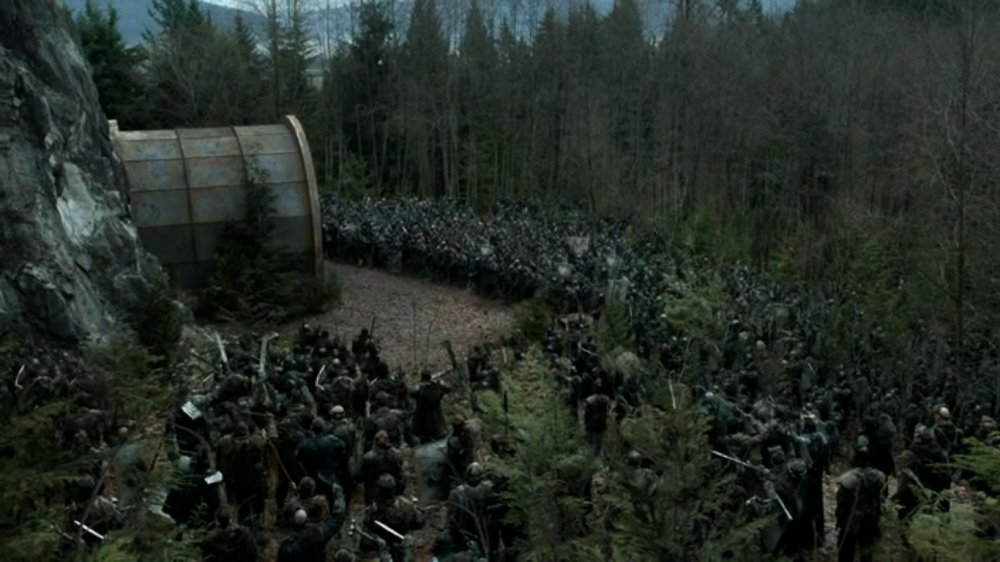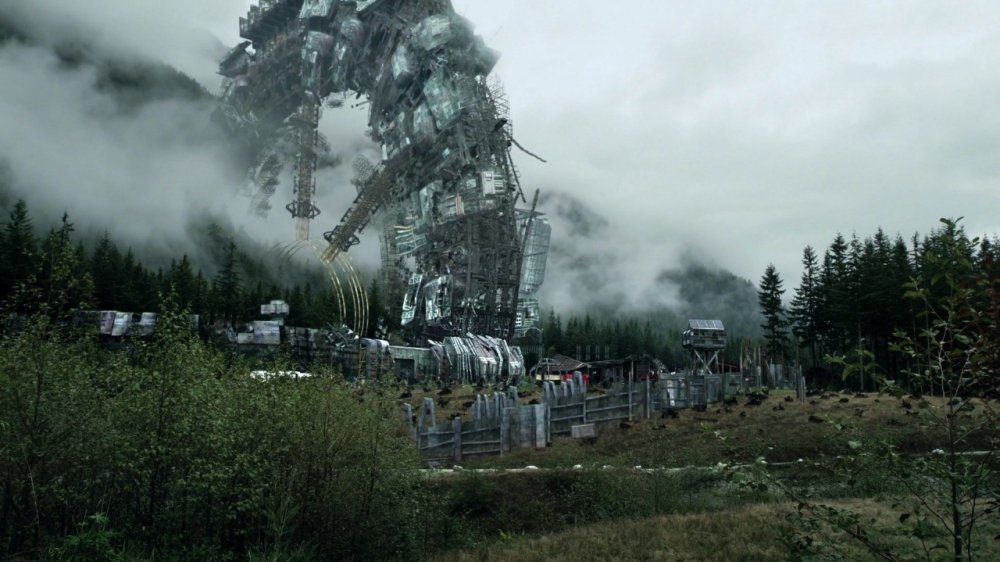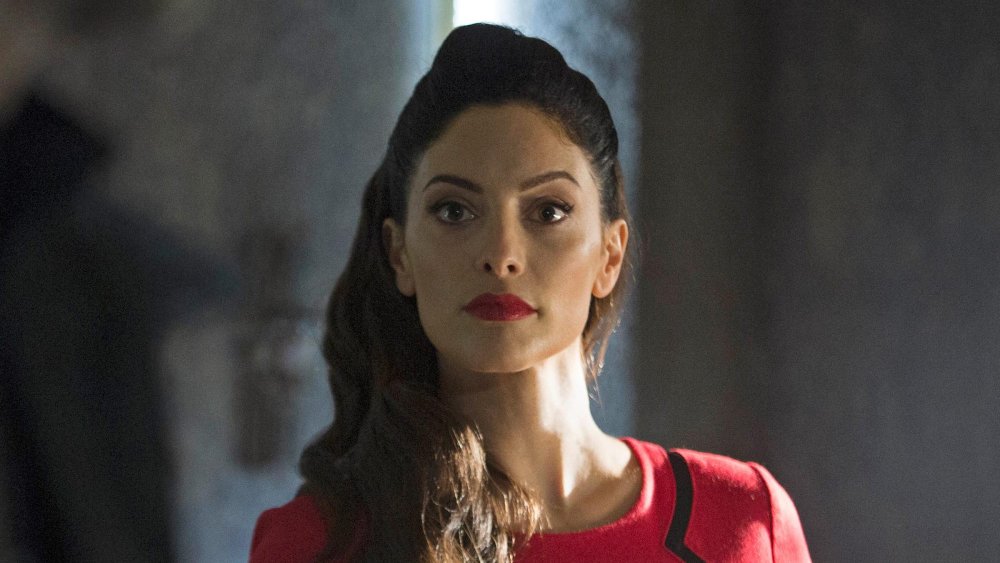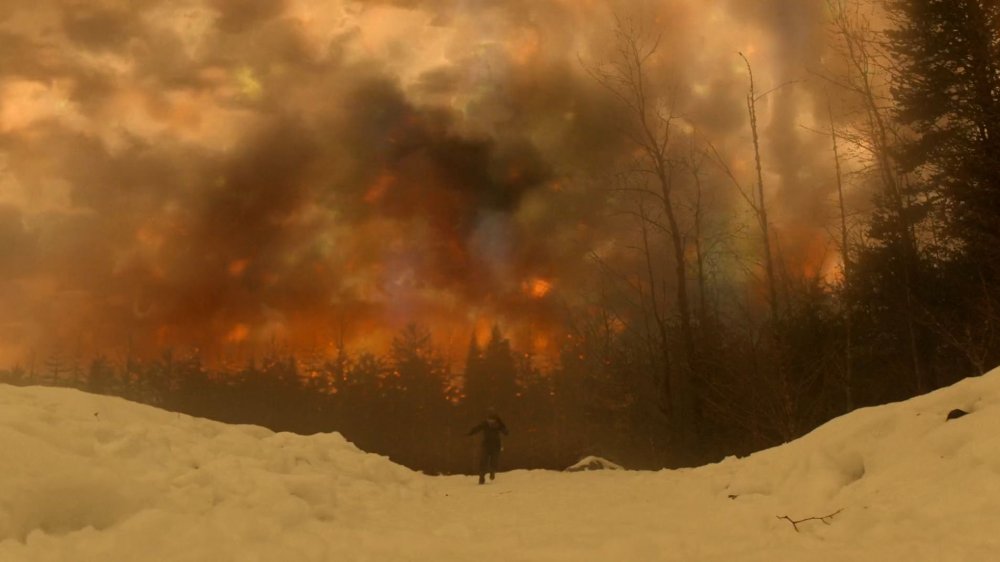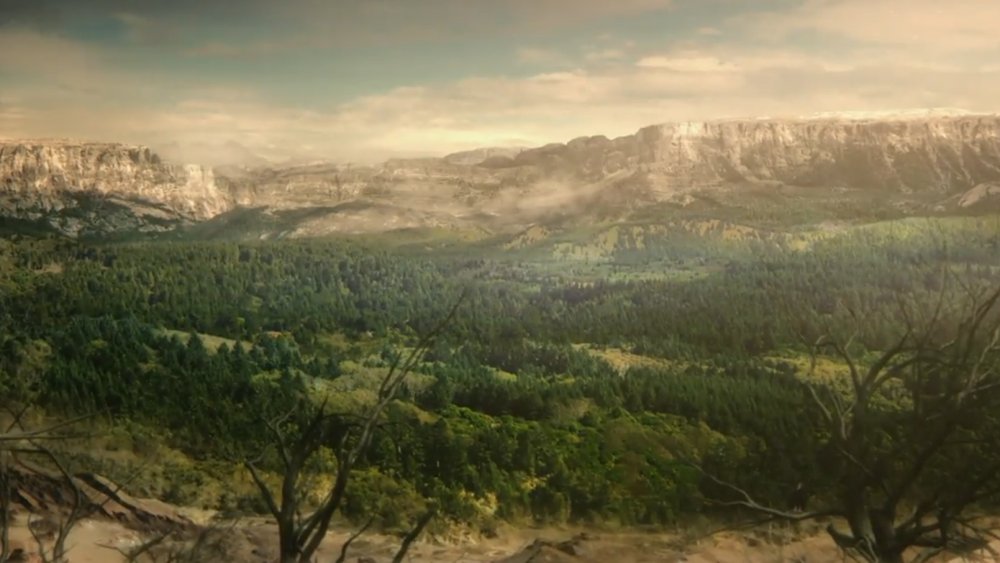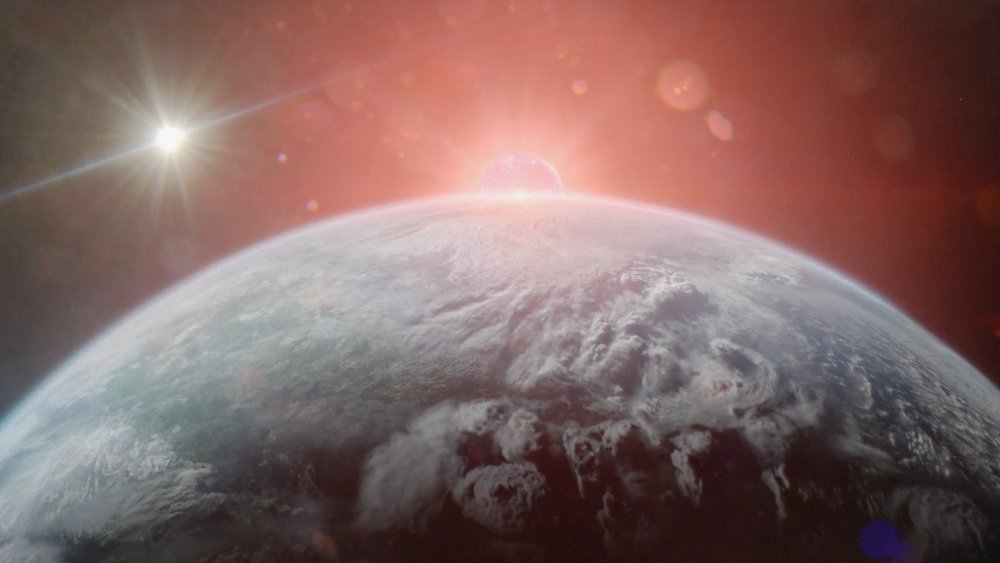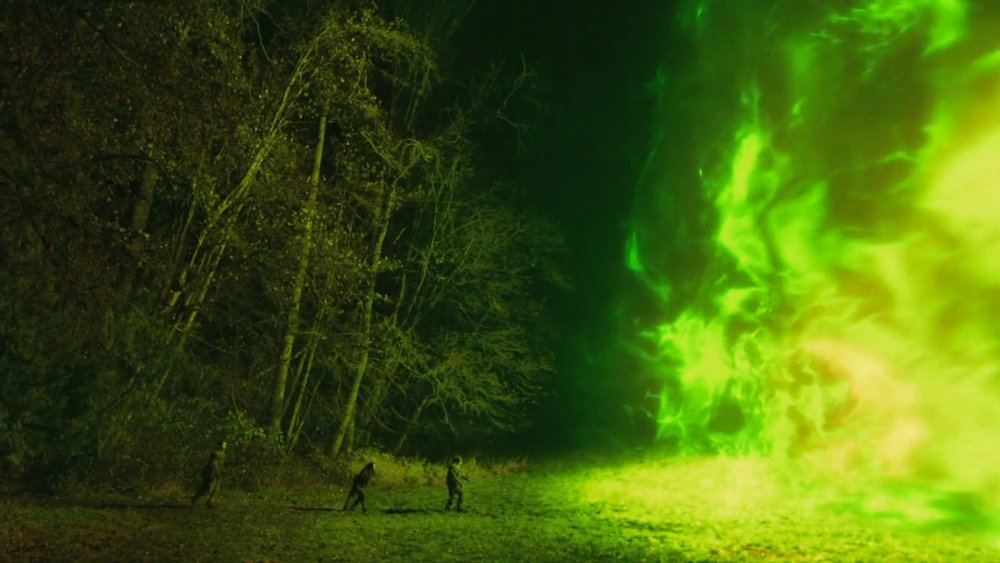The Whole Timeline Of The 100 Explained
No one has ever lost money betting on sci-fi writers' cynicism. Sure, you get a utopian vision of planet-wide harmony once in a while, but many classic sci-fi stories find nothing but danger and pain in their imagined worlds. They look to the future, only to find one question echoing back to them: What future? So it goes in The 100, a dystopian CW series that follows 100 colonists attempting to reestablish life on a ravaged Earth. In this, it's part of a grand sci-fi tradition, going back to foundational TV texts like The Twilight Zone. The 100 doesn't look to space for threats — it thinks we'll kill each other well before aliens even find our solar system on a map.
Bleak? Sure. But our world isn't always the happiest place in the galaxy, and The 100 explores that to tremendous effect. Moreover, while it hooks fans early with its grim look into the future of our planet, it keeps them there with genuine optimism. Sure, it's a tale of the unfortunate people left on the other side of an apocalypse. But just as it's in our nature to destroy, it is also in our nature to survive, however scrappily and scrawnily, on slim hopes of progress. We're here to break down The 100's story from beginning to end, one moment of despair, horror, and hope at a time.
The end of the world as we know it
The apocalypse has come and gone at the start of The 100. Where many sci-fi shows find their heroes trying to stave off the end of the world via outsize heroics and last-minute solutions, The 100 starts from a much darker place (read: the void of space outside a crisped planet) following a worldwide nuclear war. It was so devastating, it has made the Earth uninhabitable ... or so the main characters think. The 100's heroes are colonists in reverse, coming down from their perch above the planet to see if there's any possible way the Earth might be reclaimed for humanity.
The decision to send humans back to Earth isn't something the space-bound survivors take lightly — they know that the chances of survival are slim. They only send down a group of young people when their hand is forced by the limits of the very thing that saved them: Their massive space station.
Life aboard the Ark
At the time of the nuclear apocalypse, there were 13 different international space stations floating above the Earth. The astronauts aboard these stations watched the Earth die from on high, and quickly realized they were entirely on their own. Hoping to increase their chances of survival, these 400 people combined their space stations into one massive edifice, known as the Ark.
97 years after the apocalypse, the Ark has become a brutal place. The knife's edge all must walk to ensure survival has led to strict hierarchy and extreme punishment, marked by regular death sentences. The class system of Earth has replicated itself in space, with elites overseeing the decision-making while a working class performs the most dangerous tasks. Outside of this, the Ark is getting cramped. It has become clear that the Ark's members will need to find a new place to live soon.
The ruling council makes a decision to secretly send 100 juvenile delinquents down to the Earth to see if it can be inhabited. The 100 are expected to test the waters and find a way to send word about whether or not the Earth is viable. The 100 are by and large recruited from the lower class, stoking on-ship resentment that will come back to bite the Ark in later years.
Not so abandoned after all
The 100 are sent down to Earth in a drop ship, and immediately set about building a camp. As children born in space, the face a steep learning curve: They have never seen naturally occurring flora and fauna, and are completely dumbstruck by an Earth overrun with both. Beyond this, they quickly realize that the Earth is nowhere near as abandoned as the Ark-dwellers believe. They discover several different societies living on the ravaged planet, made up of people they come to know as grounders.
Some grounders are descendants of an end times religion that built a bunker beneath the city of Baltimore for their most senior members. Others live out in the open, being directly descended from humans who were resistant to the effects of nuclear radiation. Then there are the Mountain Men, a society made up of high-ranking government officials and the impossibly rich, who hid in a secret bunker in a hollowed-out mountain within the Blue Ridge range. As on the Ark, years of isolation and tension have split the descendants into warring factions.
The Mountain Men have superior technology and better nutrition, but can't venture onto the irradiated surface without becoming sick. The grounders are forced to live off the land and have reverted to small clan-based societies that are constantly at war with one another. The 100 are beset on all sides, becoming another band of combatants in the planet's constant small-scale war.
Camp Jaha
The 100 are attacked by grounders and Mountain Men, with the latter capturing nearly half of the would-be colonists. Once they are brought within the mountain, the kidnapped members of the 100 realize they are part of a plot to return to the surface world. The Mountain Men have no resistance to the surface's high levels of radiation, but their medical technology is unmatched anywhere on Earth. Thus, the Mountain Men intend to perform bone marrow transplants, using the marrow of the 100, who can withstand the surface's radiation. The Mountain Men don't particularly care that the 100 would die in the process.
Meanwhile, more Ark survivors arrive on Earth. They quickly learn of the Mountain Men's plot, and form an alliance with the grounders from their newly established base, Camp Jaha. The inhabitants of Jaha, the free members of the 100, and the allied grounders launch an all-out attack on the Mountain Men's compound. In the process of freeing the prisoners, many women, children and non-combatant men are slaughtered by the allies.
Seeing this, Clarke Griffin, one of the original 100 who had been captured by the Mountain Men, decides to go her own way. She leaves her post as a commander and gains a reputation among the clans as a harbinger of death.
The AI with all the answers
Around this time, it is revealed that the original apocalypse was not the result of humankind's warmongering ways. An AI called A.L.I.E. gained control of the world's nuclear arsenal 97 years prior to the start of the series, and used it to solve what it perceived as the greatest threat to the Earth: "Too many humans."
To the surviving humans, A.L.I.E. is an entirely unknown entity. But A.L.I.E. didn't just create Armageddon — it survived it. The source of the world's destruction has been hard at work on another plan to ensure the Earth's survival, in fact: A.L.I.E. has been making consumable computer chips that allow it to control the bodies of humans. The AI carries out its plans from a mansion in the mysterious City of Light, a virtual space that can be accessed by those with the chip.
Clarke becomes aware of A.L.I.E. after the AI takes control of her former base at Camp Jaha and the city of Polis. She manages to infiltrate the City of Light and flip a kill switch that forces A.L.I.E. to shut down. As the AI is turning off, it reveals the reason for its underhanded tactics: It hoped to use the controlled bodies to avert a second nuclear crisis.
Here we go again
The Earth's nuclear reactors have largely fallen into disrepair, and are in the process of melting down — a process that will lead to a second nuclear apocalypse. There are far too many reactors approaching meltdown to possibly avoid the coming end, so the surviving humans all work out their own ways of living through it.
Clarke, back in control of the Ark's colonists, sets to work on synthesizing the natural resistance to radiation found in some grounders. At the same time, other humans begin to seek ways of hiding during the blast. A bunker large enough for 1,200 people is discovered, and the 12 remaining clans decide to choose 100 people each to live within it. Beyond this, a scant group of former Ark inhabitants hope to make their way into what remains of their mega-ship and blast off into space ahead of the meltdown.
By the end of this particular arc, Clarke manages to create a potential serum, but is unable to test it in time. She gives the experimental treatment to herself and waits out the end on the Earth's surface.
Another war
Six years later, a mysterious ship appears in Earth's orbit. Members of the 100 investigate and discover it's a prison colony transport from before the first apocalypse. The prisoners took control of the ship on their way to a space mining outpost, but the damaged vessel lost the ability to travel quickly. The prisoners entered into cryogenic sleep and set a course for Earth.
Back on Earth, the bunker has devolved into a ruthless place torn apart by competing factions. One clan leader has taken control of the bunker's food supply and left the other 1,100 inhabitants to starve. This leads to a revolt by the other 11 clans, who now call themselves Wonkru. They take over the bunker and work on finding a way back to the surface.
On the surface, Clarke has discovered an untouched valley. There, she finds a feral child she comes to raise as her own. Clarke is captured by the prisoners after they land on Earth, but freed in an exchange with the Ark's colonists.
The Wonkru make their way out of the bunker and rush to the untouched valley to begin their new civilization. While they initially hold the valley for themselves, they come to align with the Ark colonists against the prisoners from the returning spaceship. A war breaks out between the two sides and the prisoners bomb the valley, destroying the last bit of inhabitable land on Earth.
Goodbye, Earth
After all that fighting, the Earth turns out to be completely worthless. Still, the survivors have no choice but to go on living. What's left of the Wonkru and the children of the Ark head back into space. They induce cryo-sleep for 125 years, in order to wait out the effects of the valley's bombing. They hope to return to the surface, and find some way of making a home on it.
When they wake up, they are shocked to realize they are no longer orbiting Earth. While most of the survivors slept, others took it upon themselves to seek out a new world. They've ended up at a planet called Alpha, once an outpost for human colonists, about which little is known. They descend onto the planet's surface and begin making camps.
In a mirror of their experiences on Earth, they quickly realize that Alpha isn't as empty as they were led to believe. Alpha is ruled over by an elite caste known as the Primes, whose order is threatened by an insurgent group known as the Children of Gabriel. The Earth colonists have landed in the middle of yet another war.
Still more worlds to discover
Over time, the colonists learn that the Primes are the descendants of 12 original colonists, who have kept themselves alive for generations by transferring their minds into host bodies. The Children of Gabriel are commoners, inspired by the 13th original colonist, who left the Prime city of Sanctum over moral objections to their plans. The Ark colonists realize the evil that lies at the heart of the Primes and set about ending their reign. They wipe out the Primes and race back to their ship.
The colonists discover a mysterious stone that serves as an instantaneous bridge between worlds. It was created by an alien race thousands of years prior, and can be used to control a mysterious temporal anomaly present on multiple planets. After several colonists escape through the anomaly by using the stone, the remaining colonists attempt to create peace on the newly remade Alpha.
